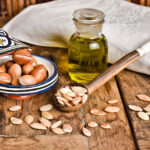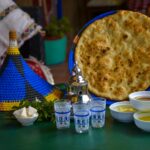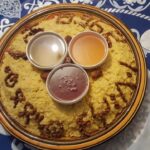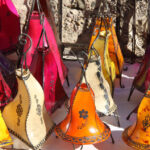CTRL+K
CTRL+K
Morocco is a nation known far and wide for its vibrant traditions and cultural expressions, with Moroccan henna tattooing standing out as one of the most exquisite manifestations of this heritage. Henna, a natural dye derived from the henna plant, has held a significant place in Moroccan culture for centuries, serving as a decorative element particularly during joyous occasions such as weddings, festivals, and special celebrations. The intricate and captivating designs created with henna are not merely adornments but a testament to the artistic spirit and rich cultural tapestry that permeates Moroccan society.
Henna tattooing is a traditional art form that has been practiced in Morocco for centuries. It is known as “khidab” or “henna ceremony” and holds great significance in Moroccan culture. The process involves applying a paste made from crushed henna leaves onto the skin to create intricate designs. Moreover, Henna tattooing is seen as a way to enhance one’s beauty and bring good fortune. It is widely believed that the henna designs act as a shield, protecting the wearer from harm and negative energies.
Moroccan henna designs are beautiful artwork created on the skin using a natural reddish-brown dye made from the henna plant. These designs have very detailed and complex patterns that are filled with special meanings. Moreover, the most common patterns include different shapes like squares, triangles, and circles. There are also patterns with flowers, vines, and designs that look like delicate lace. Henna artists are very skilled at creating these elaborate designs. They use a small tool with a thin tip to carefully draw the tiny lines and fill in the patterns.
At Moroccan celebrations and cultural events, henna takes a leading role in festivities. Women of all ages come together and receive henna tattoos, building a sense of community and shared tradition. If you visit Morocco during festive times, you may have the chance to take part in henna ceremonies, allowing you to experience this ancient art form up close. Henna artists delicately apply intricate designs on hands and feet using the natural pigment from the henna plant. Moreover, the artwork has deep cultural significance, symbolizing good luck, fertility, and spiritual awareness. As the intricate patterns dry on the skin, women bond over storytelling and laughter, cherishing the age-old ritual.
In Morocco’s Souss-Massa region, henna tattooing is a treasured cultural practice with deep roots in local customs. Women often come together during joyous celebrations like weddings to decorate their hands and feet with intricate henna designs called “khidab”. These designs feature elaborate geometric shapes and flower patterns, which symbolize beauty, good luck, and protection from harm. Moreover, the process of applying henna is considered an art form passed down through many generations, with skilled artists creating unique and personalized designs for each person. The rich red color of henna signifies happiness and joy because it adds a touch of cultural beauty to special occasions in Souss-Massa.
In the region of Souss-Massa, the ancient art of henna tattooing is a cherished tradition, where you can witness this captivating practice at local markets, during vibrant festivals, or at special henna ceremonies hosted by skilled artisans. Keep an eye out for talented henna artists who can create intricate and authentic designs with their steady hands, because these designs often hold deep cultural significance and symbolism, passed down through generations. For this reason, don’t miss the opportunity to learn about the rich history and symbolic meanings behind this mesmerizing art form that has been practiced for centuries.




































There are no results matching your search.
Reset